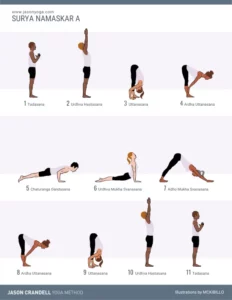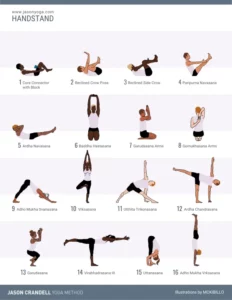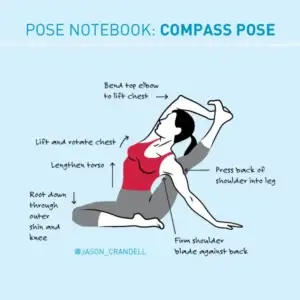It’s hard to make a living as a yoga teacher. Here’s why doing an advanced training is one of the most valuable, meaningful, sensible things you can do for yourself.
Despite teaching yoga for nearly 20 years, I have questionable forward bends, I can’t press into Handstand, and I’m not always perfectly present. But, teaching yoga has helped me mature and taught me a few things along the way. Never taking students for granted is high on this list. I understand that in the modern era of yoga, students have countless excellent teachers to choose from. I also understand that my students have a lot of pressure on their time and their resources—and, when people are stretched thin their own wellbeing gets shifted to the back burner. So, when my students show up, I show up.
I double down on this sentiment when it comes to yoga teacher trainings—especially advanced trainings. Let’s face it: Trainings are a significant financial investment, especially when you consider the time away from work and potential travel costs. There are so many trainings that it’s hard to know which one to choose and exactly how the training will help your practice and career. And, with the challenges involved in earning a living as a yoga teacher, it’s difficult to predict whether or not the training will give you a positive return on your investment—both regards to your personal wellbeing and your livelihood.
See also 7 Vital Things to Look for in a 200-Hour Yoga Teacher Training
If you have these questions and concerns, you’re a smart, reasonable person. I’m with you. I had the same before I committed to an 18-month, nearly 1000-hr advanced studies program 17 years ago. These are rational, legitimate concerns, but bear with me because they pale in comparison to the five reasons to commit to an advanced yoga teacher training (ahem, maybe even mine).
5 Reasons to Do a 300-Hour Yoga Teacher Training
1. You will develop confidence and become more entrepreneurial
When I started teaching, I never imagined I’d say this. But, teaching yoga has been my livelihood for a long time and one of the most compelling reasons to do an advanced training is to develop the knowledge and skill that will give you the confidence to be more entrepreneurial. The truth is that it’s next to impossible to make a living by only teaching public yoga classes. In order to support yourself—and maybe your family—as a teacher, you’ll need the confidence to make entrepreneurial decisions and treat your enterprise as a small business. You’ll need to teach workshops, retreats, trainings, and private sessions. In the future, you’ll want to be able to figure out how to provide online content and pitch content to yoga websites and magazines. You may want to work with the medical industry. There will be countless opportunities for yoga teachers to create a livelihood, but it will be next to impossible to do these things without the confidence that comes from knowing that your education is top notch.
2. you’ll learn to create a consistent, structured approach to vinyasa yoga
Modern vinyasa yoga is all over the place. It’s become so diverse that most students don’t know what type of experience they’re going to have when they come to a vinyasa class. Fortunately, the time you invest in your advanced teacher training will teach you to hone your focus and create a consistent, structured approach to your classes. This will make you stand out as a teacher and develop a consistent point of view that your students can rely on. New teachers often feel pressured to constantly changing their sequences. Experienced teachers stay creative, but focus on keeping every aspect of class more consistent for their students. And, the truth is that most students prefer a certain amount of routine with just enough variations to keep things fresh.
3. you’ll Become a more accessible and relevant communicator
There’s an adage that if you can’t explain something simply, you don’t understand it well enough. When you deepen your training, you become more knowledgeable about yoga sequencing, anatomy, technique, injury management, and more. From that depth of knowledge, you’ll more easily be able to translate complex concepts in accessible and relevant ways for your students. This will help deepen the connection between you and your students.
See also Verbal Cues for Yoga Poses: Immediately Improve Your Communication
4. You’ve taught long enough to know what your limitations and challenges are
It took me years of teaching to learn what I didn’t know, to witness my limitations as a teacher, and to understand what I needed to improve. I’m still working to improve my knowledge and my communications skills. But, here’s the point—returning to a training program after you’ve been teaching for awhile is incredibly efficient, because you already know what the job requires and where you feel challenged. You understand what it’s like to teach, you know what you do well and you’ve finally figured out where you can use more knowledge and skill. Since you already have on-the-job experience, your advanced training will be even more focused, accessible, and applicable than your foundational training.
5. If this is your passion and livelihood, it’s worth the investment of your time and resources
I’m a straight-up, typical Midwesterner when it comes to managing my resources and expenses. Value is hugely important to me and I’ve never tried to upsell anyone on anything. At the same time, I don’t balk at investing in my education or livelihood. To me, these are the most sound, rewarding investments that I can make—especially since this is already my job. I also acknowledge that the vast majority of professions require high levels of investment in education and ongoing investment in their business. As teaching yoga continues to be a feasible way to make a living, it stands to reason that yoga teachers that invest in their education and yoga business will provide the quality and skill that helps them stand out and make an impact on their students’ lives.e



